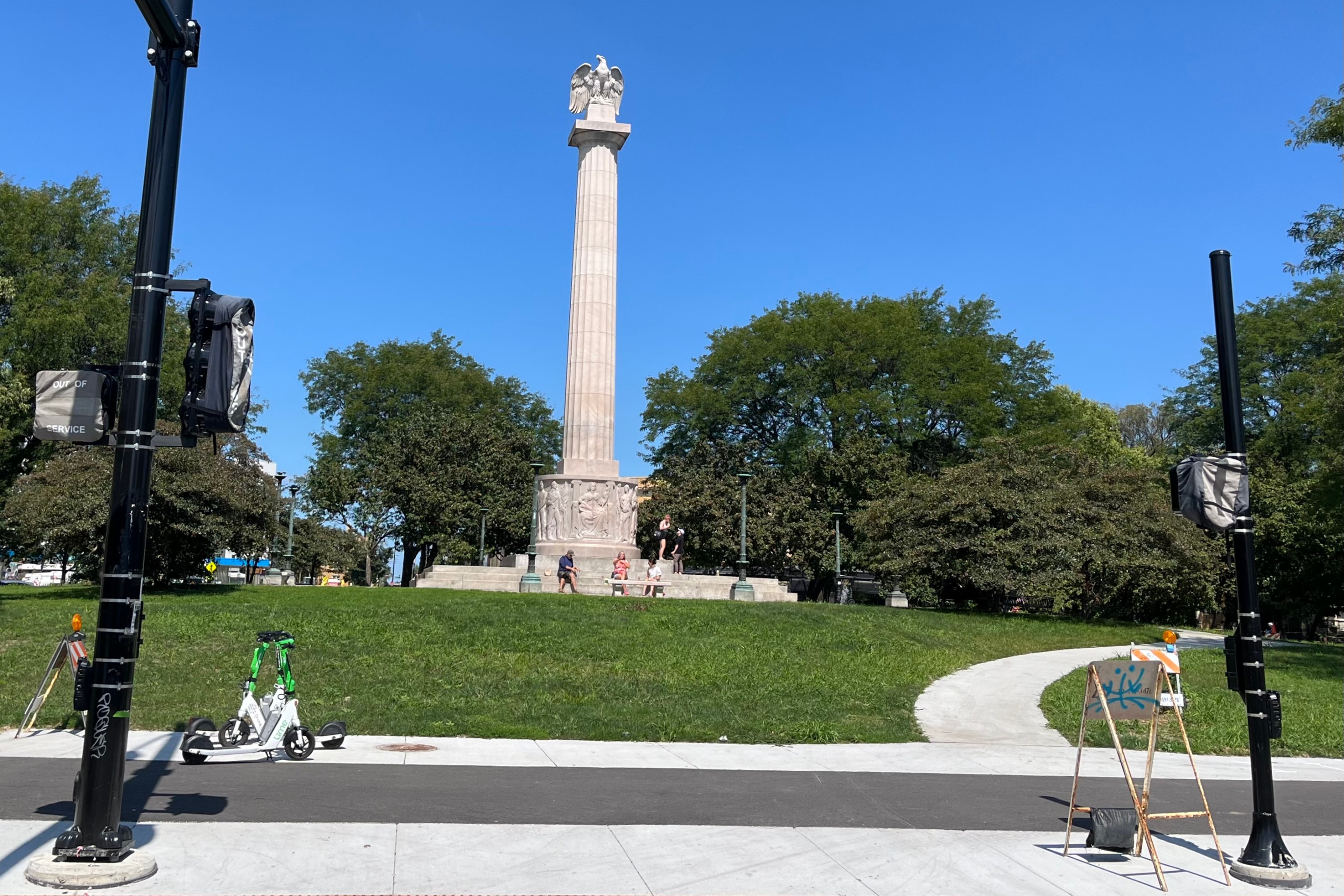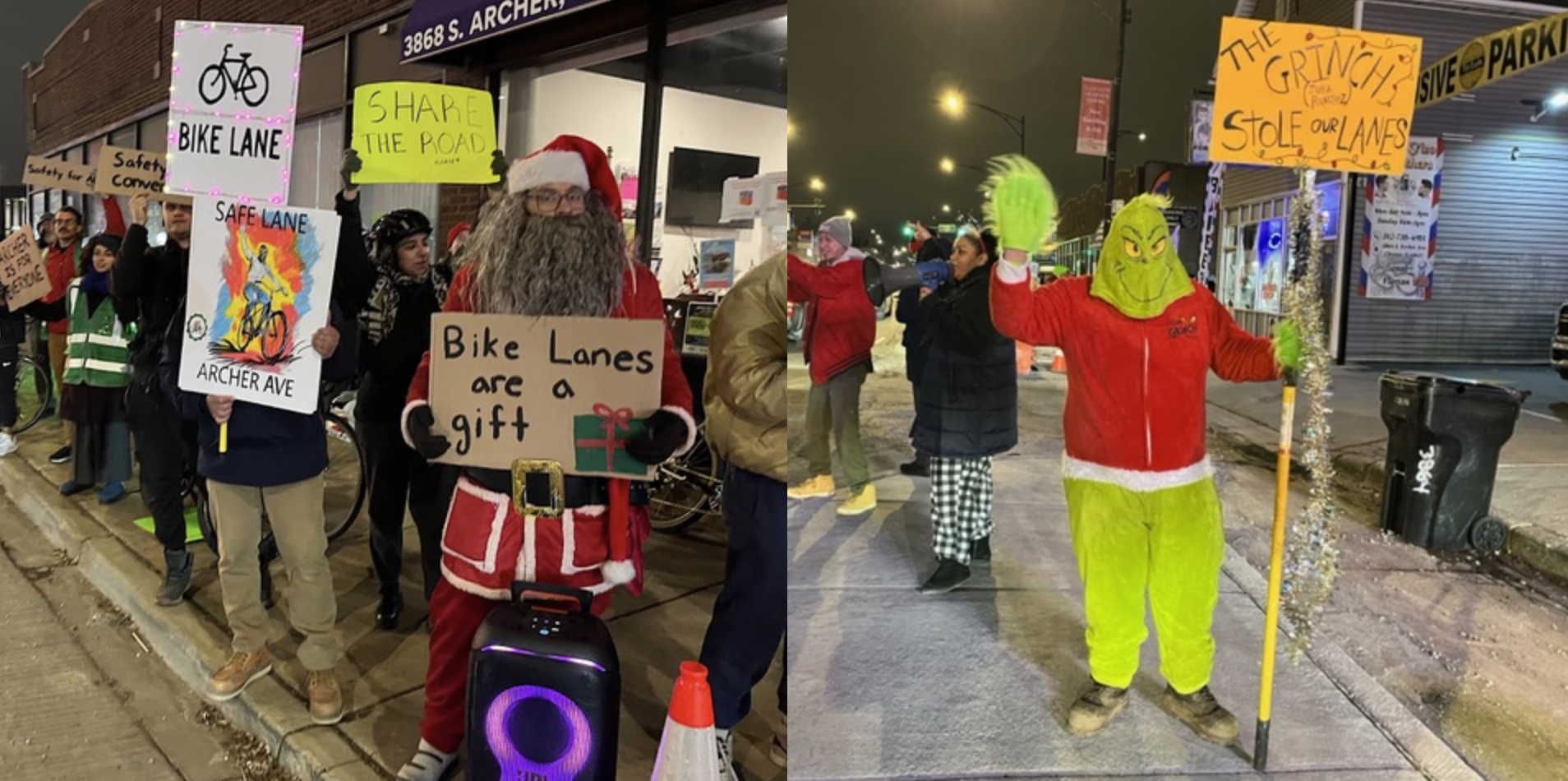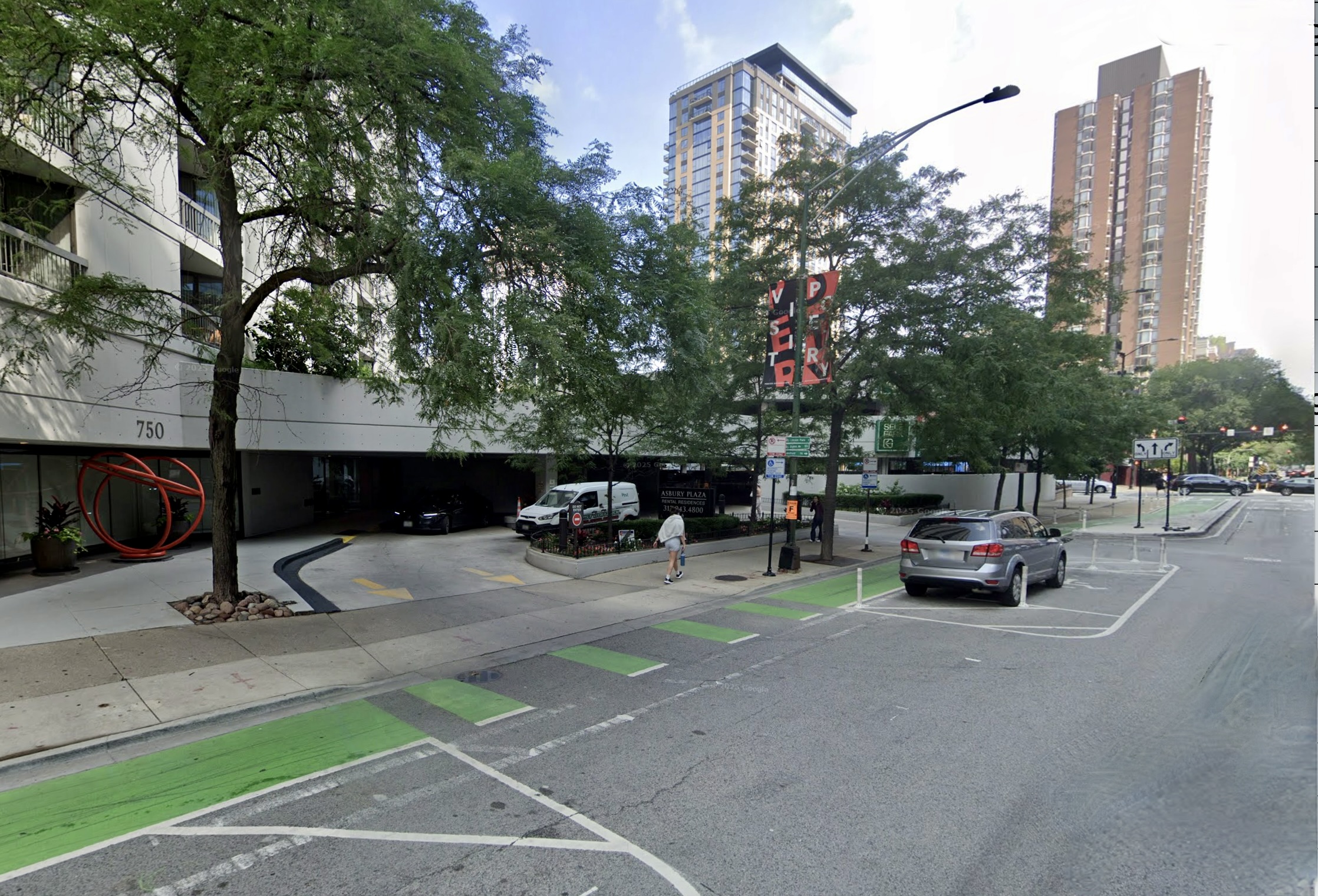
A potential land use plan for Broadway in Edgewater and Uptown would be good news for these neighborhoods, sustainable transportation, and the city at large. Building off the CTA’s nearly finished Red and Purple Modernization project, the proposal that's now being considered would support greater density and pedestrian-friendly streetscapes on the 2.6 mile stretch of Broadway between Devon and Montrose avenues. Full details are available on DPD’s website.
The planning discussion is being led by local alderpersons Angela Clay (46th), Matt Martin (47th), and Leni Manaa-Hoppenworth (48th), along with the Chicago Department of Planning and Development. In addition to building off prior planning in Edgewater and Uptown, officials held a pair of community meetings on the proposal late last year.
There are a bunch of reasons to be excited about this project. By adding pedestrian street designations to parts of Broadway that don’t yet have them, the city would enhance walkability and prohibit new curb cuts for car-centric land uses like strip malls, drive-throughs, and car washes. But the biggest change would be the upzoning, which would could result in more affordable housing options, increased transit ridership, more customers for local businesses, and more tax revenue for the City.
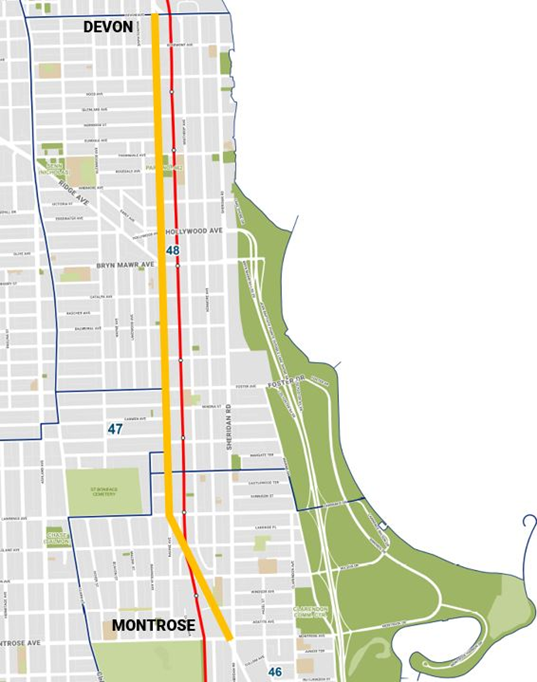
More, and more affordable, housing
The proposed upzoning, which would shift much of the corridor to the B3-5 zoning designation, would make it possible to add significantly more housing to the corridor. According to calculations by Steven Vance, founder of the development data website Chicago Cityscape and cofounder of Streetsblog Chicago, about 18,000 new housing units would be allowed under the zoning revisions. That does not mean that we’ll see an immediate flood of units. There is already a fair bit of unused zoning capacity on Broadway today. But it would mean that the street could expect to see housing built at a faster rate over the next couple of years.
Broad upzoning ensures that every property has an equal shot at adding density. Not every property owner will have the desire or capability to build, and the city shouldn't be in the business of regulating which properties or owners have the privilege to do so. "The current zoning regime has so many ways for an alderperson to intervene," Steven says. "That raises costs, delays housing, and sustains segregation. Broad upzoning cuts out a few of those ways."
More predictable zoning can also yield more units at a lower cost. In LA, UCLA researchers estimate that it can cost developers $1,200 to $4,000 per unit, per month to wait for zoning and permitting approvals. When projects don’t have a decent shot of getting approved, or they can’t command the rents necessary to cover those high costs, they don’t get built in the first place. When LA shifted to allowing by-right approvals, projects got built 28 percent faster, with more units and more affordable units.
Finally, higher allowed building heights could also make more developments viable in the first place. As buildings get taller, each additional floor generates roughly the same rent – but construction costs don't increase proportionately. Researchers at Cal State Polytechnic and Purdue Universities found that construction costs spike from three to four floors (when buildings go from wood to steel frame), and again from seven to eight floors (when buildings require faster elevators and deeper foundations). Here’s what that looks like in Chicago.
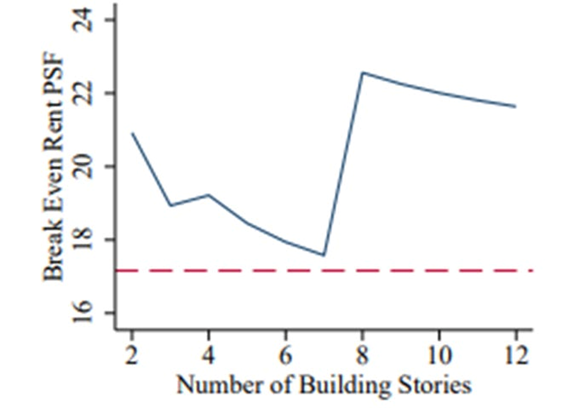
That means that a four-floor building might not be worth building (because required rents per unit would be very high), but a six or seven-floor building might. By raising allowable by-right heights to between 55 and 80 feet, the planned land use changes could substantially increase the number of viable projects.
Those units will help keep nearby neighborhoods affordable. Researchers have exhaustively documented the fact that new housing helps reduce nearby displacement. The logic is straight-forward: if high income people want to live near Broadway, they have the money to do so. If there aren’t new homes getting built, they’ll bid up rents, pricing out lower-income residents. But if we keep building more housing, tenants won’t be caught in a bidding war, and we’ll have space for new arrivals and long-time residents alike.
As a bonus, Chicago's Affordable Requirements Ordinance applies to projects that benefit from upzoning. That means 20 percent of any 10+ unit buildings that take advantage of the upzoning will be leased at below-market rents, generally affordable to folks making 60 percent of the Area Median Income. If those 18,000 units do get built, that would translate into thousands of additional units of affordable housing.
Support for local businesses
It’s no secret that the last few years have been hard on local businesses. The COVID-19 pandemic was devastating, and while the CTA has worked to mitigate any negative effects of the RPM project, major construction often comes with significant disruptions.
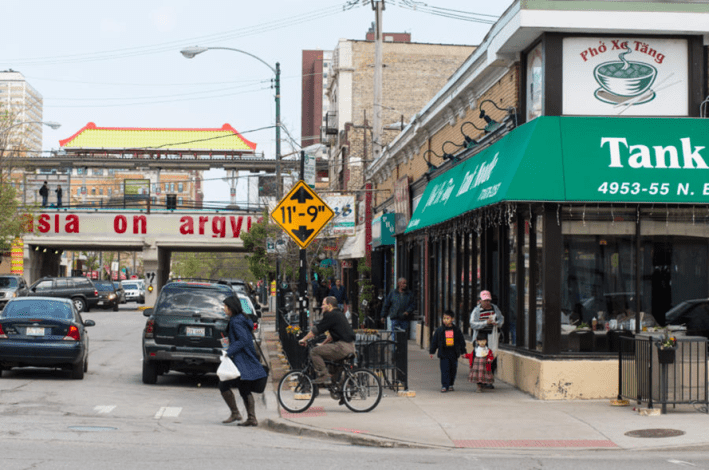
More foot traffic would help businesses recover. In 2021, the City found that areas with new transit-oriented developments saw new business creation grow by 6 percent. Areas near transit that didn’t see new TOD investment saw new business creation slow by 6.5%. It’s hard to account for confounding variables here (a 'hot' part of the city might experience both new TOD investment and new business creation). But a revised land-use plan that includes more pedestrian-oriented businesses and denser residential development would be a shot in the arm for local businesses. I’m sure that’s part of why the Edgewater Chamber of Commerce and Uptown United, a local economic development nonprofit, are part of the project.
Higher transit ridership
CTA ridership has been recovering since the pandemic, but the system still faces a dire fiscal cliff that will require action in Springfield. The RPM project is a real bright spot for the system, however, and will result in faster and more reliable service just steps away from Broadway. But Chicagoans are only likely to benefit from those improvements if they live nearby. Mariela Perignon, a data scientist at Strong Analytics, found that only 20 percent of ‘L’ riders live more than 1 kilometer (0.6 miles) away from a station. As you can see from the map below, the Red/Purple line is already one of the most heavily traveled parts of the system, thanks to existing density near the lakefront.
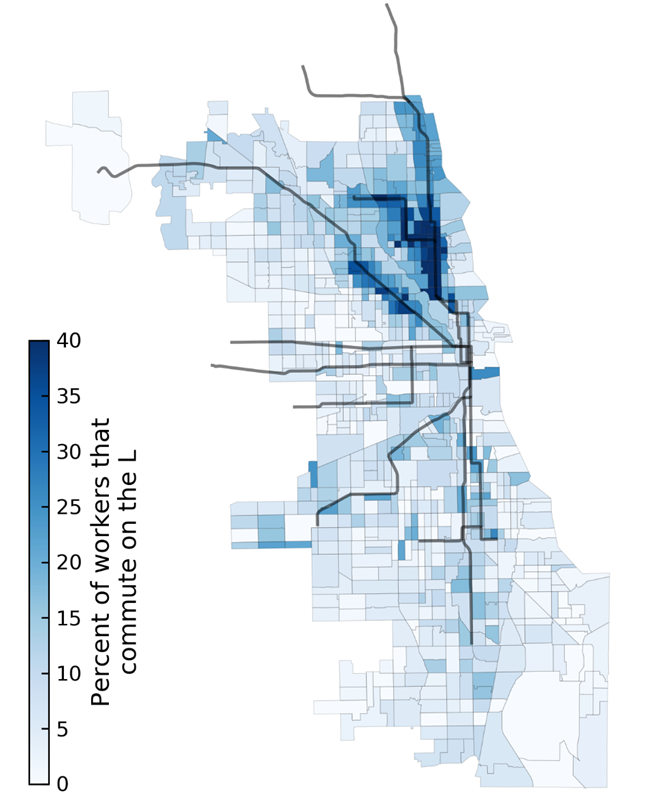
Allowing more housing on Broadway, in concert with the RPM project, will make it a lot easier for more Chicagoans to take the train. That means less traffic and greenhouse gas emissions, and more farebox revenue and political support for one of our city’s greatest assets.
More tax revenue
I don’t know if you’ve heard, but Chicago faces a major pension crisis. The 2025 budget fight came down to the wire, and you can bet that next year’s budget will be even harder. This year’s budget relied on a variety of one-time fixes, more state funding is not forthcoming, and federal pandemic aid will be fully exhausted by the end of 2025. Our city's single best option to address these challenges is to grow – spreading our financial liabilities over more residents and businesses, rather than saddling existing residents with yet more tax increases or cutting services to the bone.
Abundant Housing Illinois member Michael McLean ran the numbers. He took a look at the average property tax payment per unit in four-to-six unit buildings in Cook County's Lake View Township (which covers the relevant stretch of Broadway). Over the last five years, the unit at the 75th percentile for tax revenue (a decent proxy for new construction) paid $6,051.09 per year in property tax payments. That’s probably a conservative estimate, given that property values rise over time, and values in larger buildings permitted by the upzoning may well be higher.
Assuming that developers end up building between 30 and 60 percent of the 18,000 units allowed by the upzoning, we can expect an additional $30-60 million in annual property tax revenue. That money would help publics schools, first responder services, and additional infrastructure investments.
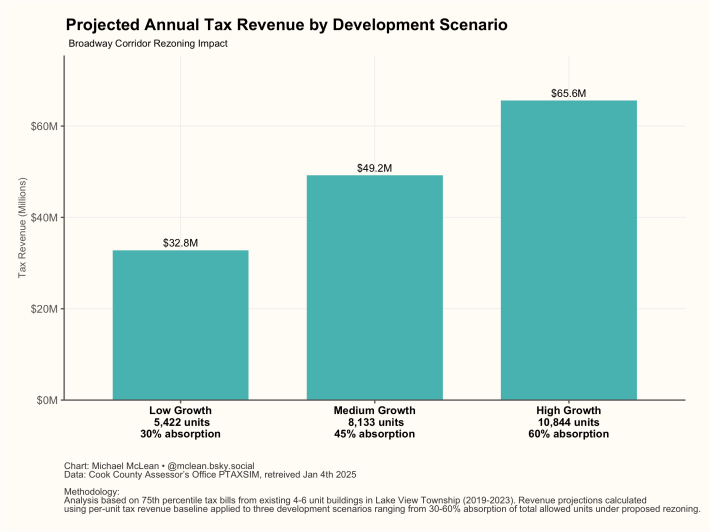
That’s the magic of upzoning: Not only does housing become less expensive, but when we attract new residents to Chicago, we unlock a gusher of cash to fund city services. That’s before factoring in sales tax revenue or other taxable economic activity supported by those residents. And while it’s true that new residents do have additional costs, the City’s fiscal picture generally improves with more headcount. Legacy pension costs are already fixed, CPS is already dramatically under-enrolled, and transit becomes more cost efficient as ridership grows.
Fundamentally, this is how cities are supposed to work. People converge in places with job opportunities and a decent quality of life. Investments in infrastructure and other public services make those places better off. That makes a place even more appealing, attracting more residents and helping to strengthen a city further.
We should be grateful that the alders in question are fighting for a Chicago that is more equitable, sustainable, and prosperous. It's also not too late to help them out. A final decision on upzoning has not yet been made, and you can still register your support for a revised land use plan. DPD is still accepting input via this online feedback form until January 15th.

Did you appreciate this post? Streetsblog Chicago is currently fundraising to help cover our 2025-26 budget. If you appreciate our reporting and advocacy on local sustainable transportation issues, please consider making a tax-deductible donation here. Thank you!

